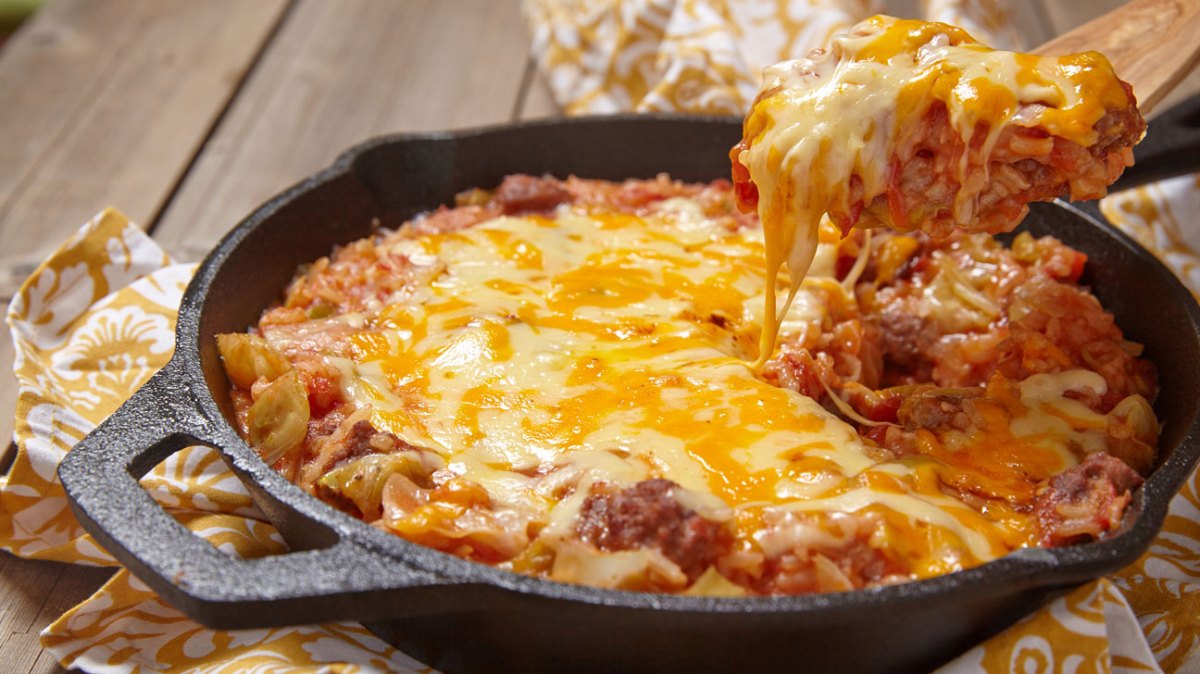Imagine savoring the rich, vibrant flavors of Italy without the carb-heavy guilt. This culinary journey unveils the secrets to crafting authentic Italian dishes, meticulously adapted for a low-carb lifestyle. We’ll explore innovative ingredient swaps, from cauliflower “rice” substituting creamy risotto to zucchini noodles replacing traditional pasta, all while preserving the heart and soul of Italian cuisine. Prepare to tantalize your taste buds with dishes that are both delicious and diet-friendly, a testament to the versatility and adaptability of classic Italian recipes.
Through detailed recipes and insightful comparisons, we’ll navigate the world of low-carb pasta alternatives, exploring their textures and flavors. We’ll delve into the art of creating low-carb sauces, highlighting ingenious substitutions that maintain the depth and complexity of traditional Italian condiments. Discover regional variations, each a testament to Italy’s diverse culinary heritage, all while maintaining a low-carb approach. Finally, we’ll unravel the science of balanced macronutrients, ensuring your low-carb Italian feasts are both satisfying and nutritionally sound.
Low-Carb Italian Sauces and Condiments
Embracing a low-carb lifestyle doesn’t mean sacrificing the rich, vibrant flavors of Italian cuisine. With a few clever substitutions, you can enjoy classic Italian sauces and condiments without the guilt, maintaining the authenticity of taste that defines Italian cooking. This section explores three popular sauces and how to adapt them for a low-carb diet.
Low-Carb Adaptations of Classic Italian Sauces
Transforming beloved Italian sauces into low-carb versions involves primarily replacing traditional thickening agents and minimizing added sugars. The key is to focus on enhancing natural flavors through the use of high-quality ingredients and clever cooking techniques. This allows for a rich and satisfying sauce without compromising your dietary goals.
Marinara Sauce: A Low-Carb Makeover
Traditional marinara sauce often relies on sugar to balance acidity and enhance the sweetness of tomatoes. For a low-carb version, we eliminate added sugar entirely, relying instead on the natural sweetness of ripe tomatoes and a touch of balsamic vinegar for depth. The thickening is achieved using a combination of tomato paste (which is naturally thicker than crushed tomatoes) and a simmering process to reduce the sauce’s liquid content. The result is a vibrant, deeply flavorful sauce that perfectly complements zucchini noodles, cauliflower rice, or portobello mushroom steaks. Its flavor profile is tangy, bright, and slightly acidic, with a rich tomato taste that’s both familiar and satisfying.
Arrabbiata Sauce: A Spicy Low-Carb Delight
Arrabbiata, meaning “angry” in Italian, refers to the sauce’s fiery kick. The traditional version often uses a significant amount of sugar to temper the heat of chili flakes. In our low-carb adaptation, we maintain the fiery character using fresh or dried chili flakes, adjusting the quantity to your spice preference. We again use tomato paste for thickening, allowing the sauce to simmer until it reaches the desired consistency. The low-carb Arrabbiata boasts a fiery, vibrant flavor profile with a complex interplay of heat and acidity. It pairs exceptionally well with chicken breast, shrimp, or firm tofu, served over cauliflower mash or spaghetti squash.
Pesto: A Creamy, Low-Carb Treat
Traditional pesto relies on pine nuts, which are relatively high in carbohydrates. A low-carb alternative uses sunflower seeds or pumpkin seeds instead, maintaining the creamy texture and nutty flavor. The vibrant green color is achieved with fresh basil, and the garlic and parmesan cheese provide the signature savory notes. This low-carb pesto is incredibly versatile. Its rich, herbaceous, and slightly nutty flavor profile pairs beautifully with zucchini noodles, chicken, or even as a spread on low-carb bread alternatives. The creamy texture adds richness and depth to any dish.
Ingredient Substitutions in Low-Carb Italian Sauces
| Sauce | Traditional Ingredient | Low-Carb Substitute | Flavor Impact |
|---|---|---|---|
| Marinara | Sugar | Balsamic Vinegar | Enhanced acidity and depth |
| Marinara | Crushed Tomatoes | Tomato Paste & Simmering | Increased thickness, intensified tomato flavor |
| Arrabbiata | Sugar | None (adjust chili flakes) | Preserves the spicy character, avoids sweetness |
| Arrabbiata | Olive Oil | Avocado Oil | Similar flavor profile, higher fat content |
| Pesto | Pine Nuts | Sunflower Seeds/Pumpkin Seeds | Maintains creamy texture, slightly different nutty flavor |
| Pesto | Parmesan Cheese | Nutritional Yeast (optional) | Adds a cheesy, umami flavor (Nutritional Yeast adds a nutty/savory note) |
Regional Variations of Low-Carb Italian Dishes
Italy’s culinary landscape is a vibrant tapestry woven from regional traditions, each boasting unique ingredients and cooking methods. Adapting these beloved dishes to a low-carb lifestyle requires understanding these regional nuances and creatively substituting ingredients to maintain both flavor and authenticity. This exploration delves into three distinct regions, showcasing how their culinary heritage can be beautifully translated into delicious, low-carb meals.
Tuscan Low-Carb Cuisine
Tuscany, known for its rustic charm and hearty fare, offers a wealth of possibilities for low-carb adaptation. Traditional Tuscan cooking emphasizes seasonal ingredients, olive oil, and simple preparations that highlight the natural flavors of the produce. Many classic dishes can be easily modified. For instance, the iconic Ribollita, a hearty bread-based vegetable soup, can be transformed by omitting the bread and increasing the proportion of vegetables like kale, cabbage, and zucchini. The rich, flavorful broth, infused with herbs like rosemary and sage, remains the star, providing a satisfying and deeply flavorful low-carb meal. Another example is Bistecca alla Fiorentina, the famed Florentine steak. While already naturally low-carb, focusing on a lean cut and ensuring proper seasoning elevates this dish to its full potential. The simplicity of the preparation allows the quality of the beef to shine through.
Neapolitan Low-Carb Adaptations
Naples, the birthplace of pizza, presents a unique challenge for low-carb enthusiasts. However, the region’s emphasis on fresh seafood and vibrant vegetables offers alternative routes to delicious low-carb meals. Instead of traditional pizza dough, cauliflower crust or portobello mushroom caps can serve as satisfying bases for Neapolitan-inspired dishes. Top them with fresh mozzarella, San Marzano tomatoes (or a low-carb tomato sauce), basil, and a drizzle of olive oil for a flavorful, low-carb pizza alternative. Furthermore, Spaghetti alle Vongole, a classic spaghetti with clams, can be adapted using zucchini noodles or hearts of palm “pasta” to create a lighter, low-carb version that retains the fresh, briny flavors of the sea.
Sicilian Low-Carb Delights
Sicilian cuisine, a melting pot of influences, offers a range of low-carb options. The abundance of fresh vegetables, seafood, and flavorful cheeses provides a solid foundation for creative adaptations. Caponata, a sweet and sour eggplant relish, is naturally low-carb and can be enjoyed as a side dish or a topping for grilled meats or fish. Traditional Sicilian recipes often incorporate breadcrumbs; however, these can be replaced with almond flour or omitted entirely in many cases. Furthermore, Arancini, fried rice balls, can be reimagined as baked “arancini” using cauliflower rice as a base. This approach significantly reduces the carbohydrate content while maintaining the flavorful filling of cheese, meat, and peas.
Visual Representation: Tuscan Kale and White Bean Stew (Low-Carb Adaptation of Ribollita)
Imagine a rustic earthenware bowl brimming with a vibrant green stew. Tender kale leaves, deep emerald in color, swim in a rich broth, their edges slightly softened by gentle simmering. Small, pearly white cannellini beans punctuate the kale, adding texture and a subtle creamy note. Diced carrots and celery, vibrant orange and pale green respectively, add color and sweetness to the broth. A drizzle of extra virgin olive oil, shimmering like liquid gold, crowns the surface, its aroma mingling with the earthy fragrance of rosemary and sage. The broth itself is a deep, amber hue, reflecting the long, slow simmering that has coaxed out the flavors of the vegetables and herbs. A hint of garlic and a touch of black pepper add depth and complexity to the overall flavor profile. This hearty stew, visually appealing and intensely flavorful, is a testament to the versatility of Tuscan cuisine in a low-carb context.
Balancing Macros in Low-Carb Italian Meals

Maintaining a healthy and satisfying low-carb Italian diet hinges on achieving a balanced intake of macronutrients: protein, fat, and carbohydrates. Ignoring this balance can lead to feelings of hunger, fatigue, and difficulty sticking to your dietary goals. A well-structured approach ensures you enjoy the vibrant flavors of Italian cuisine while supporting your overall well-being. This involves prioritizing protein and healthy fats while limiting carbohydrates to maintain ketosis or simply keep carbohydrate intake low.
The key to a successful low-carb Italian diet is understanding how to combine ingredients to create meals that are both delicious and nutritionally sound. This requires a focus on protein sources like lean meats, poultry, and seafood, healthy fats from olive oil, avocados, and nuts, and low-carb vegetables. Careful portion control also plays a significant role in managing your overall macronutrient intake.
Balanced Low-Carb Italian Meal Combinations
A balanced low-carb Italian meal should contain a good source of protein to keep you feeling full and satisfied, healthy fats for energy and nutrient absorption, and a smaller portion of low-carb vegetables for essential vitamins and minerals. Overemphasizing any one macronutrient will likely lead to an imbalance.
- Grilled Chicken with Roasted Asparagus and Zucchini: Lean protein from the chicken, healthy fats from olive oil used in roasting, and low-carb vegetables provide a complete and satisfying meal.
- Salmon with Cauliflower Mash and Spinach Salad: Fatty salmon provides omega-3 fatty acids and protein. Cauliflower mash offers a creamy, low-carb alternative to traditional mashed potatoes, and spinach adds vital nutrients.
- Shrimp Scampi with Zoodles: Shrimp provides lean protein, while the zoodles (zucchini noodles) offer a low-carb alternative to pasta. Olive oil adds healthy fats.
- Eggplant Parmesan (using almond flour): The eggplant provides a substantial base, the parmesan cheese adds flavor and fat, and the use of almond flour in place of bread crumbs significantly reduces carbohydrates.
Sample Low-Carb Italian Meal Plan
This sample meal plan provides a balanced macro profile across a week, offering variety and ensuring adequate intake of protein, healthy fats, and low-carb vegetables. Remember to adjust portion sizes to meet your individual caloric needs and activity level. This is a sample plan, and individual needs may vary. Consult a nutritionist or dietitian for personalized guidance.
| Day | Breakfast | Lunch | Dinner |
|---|---|---|---|
| Monday | Scrambled eggs with spinach and feta cheese | Chicken salad with avocado and mixed greens | Pork chops with roasted broccoli and cauliflower |
| Tuesday | Chia seed pudding with almond milk and berries (limited portion) | Leftover pork chops and vegetables | Salmon with asparagus and a small side salad |
| Wednesday | Omelet with mushrooms and cheese | Tuna salad stuffed avocado | Chicken breast with zucchini noodles and marinara sauce (low-carb version) |
| Thursday | Greek yogurt with nuts and seeds | Leftover chicken and zucchini noodles | Steak with green beans and a side of parmesan cheese |
| Friday | Bulletproof coffee (coffee with butter and MCT oil) | Salad with grilled shrimp and olive oil dressing | Shrimp scampi with zucchini noodles |
| Saturday | Coconut flour pancakes (small portion) with berries (limited portion) | Leftover shrimp scampi | Italian sausage with peppers and onions (using low-carb alternatives where appropriate) |
| Sunday | Scrambled eggs with tomatoes and basil | Leftover Italian sausage | Roast chicken with roasted vegetables (broccoli, carrots, zucchini) |
Embarking on a low-carb Italian culinary adventure doesn’t mean sacrificing the authentic tastes and textures you crave. This exploration has revealed a wealth of possibilities, showcasing how simple ingredient swaps and clever adaptations can transform classic recipes into lighter, healthier versions. From the delicate zucchini noodles in a Roman-style cacio e pepe to the vibrant colors of a low-carb regional specialty, each dish is a testament to the enduring power of Italian cuisine. The journey has been one of discovery, proving that delicious and healthy can, and should, coexist beautifully. Now, armed with these techniques and recipes, your low-carb Italian culinary journey awaits!
Common Queries
Can I freeze low-carb Italian dishes?
Yes, many low-carb Italian dishes freeze well. Consider freezing individual portions for easy meal prepping.
Are all low-carb pasta alternatives gluten-free?
Not necessarily. Check the ingredient list to confirm gluten-free status. Many are gluten-free, but not all.
What are some good low-carb Italian desserts?
Consider almond flour based biscotti, sugar-free panna cotta, or berries with whipped cream.
How do I avoid added sugars in low-carb sauces?
Use natural sweeteners sparingly, if at all. Rely on herbs, spices, and the natural sweetness of tomatoes or vegetables for flavor.


